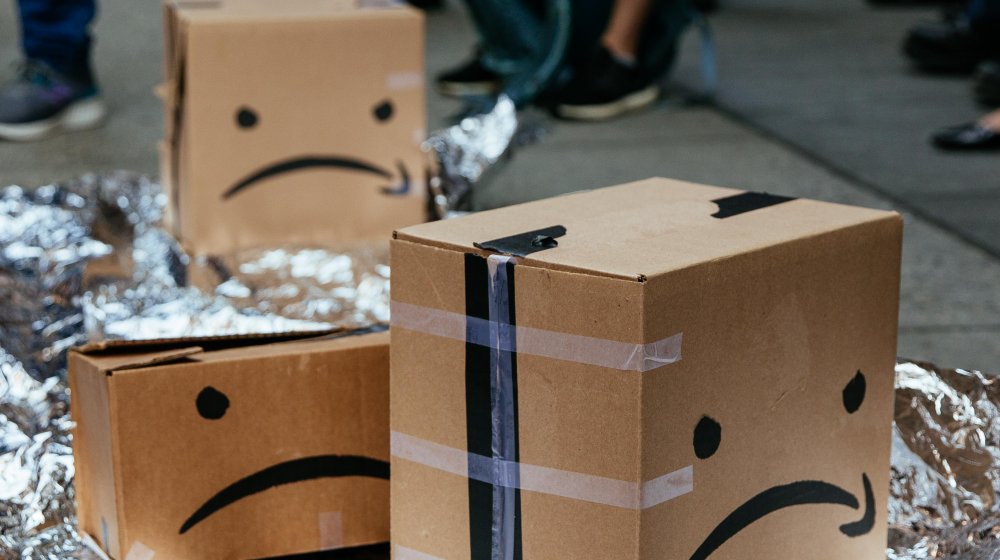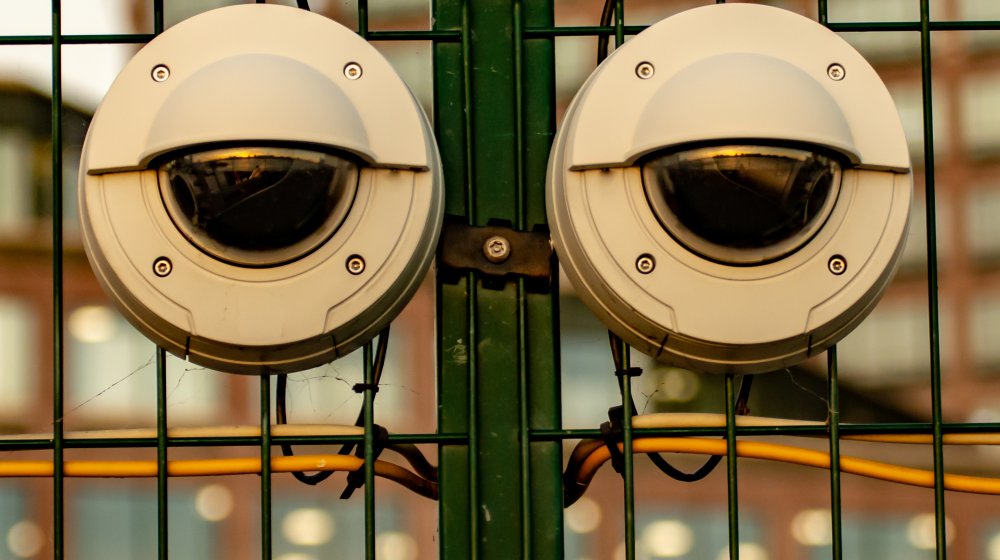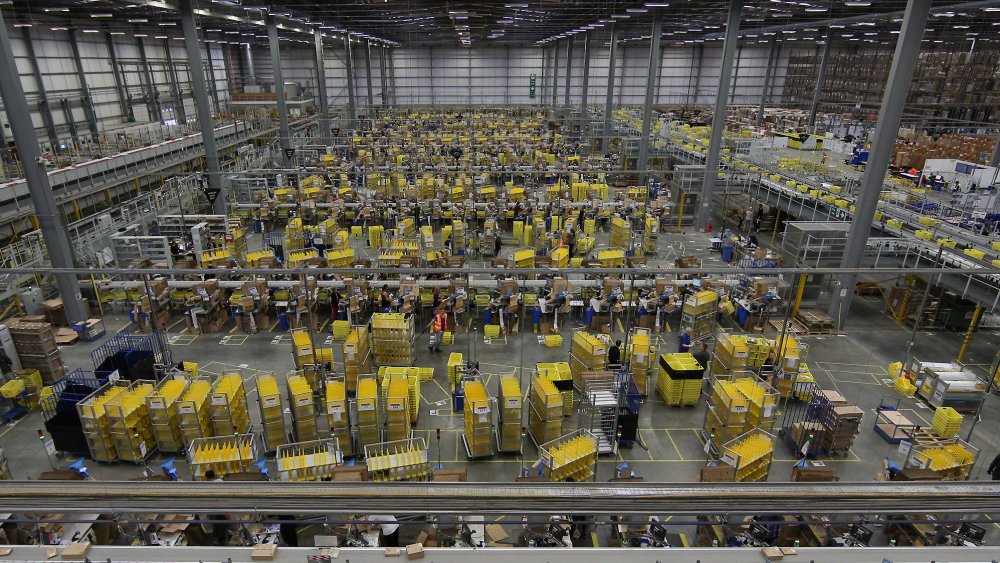The Creepy Way Amazon Constantly Tracks Its Employees
How far will Amazon go to manifest itself as the platonic ideal of a dystopian corporate hellscape? Very far, apparently. As CNBC reported, the solution Amazon devised for the issue of maintaining social distancing in their warehouses was to install a surveillance system of cameras called "Distance Assistants."
These "Distance Assistants" were strategically placed at areas of high-traffic in the warehouses, such as walkways and the entrances and exits. All these eyes then connect to a computer, which is trained to differentiate people and their surroundings, so that if a worker nears another a ring around the camera glows red. If the recommended distance is kept, the camera winks green instead. While it isn't clear yet whether Amazon will implement any penalty for breaking social distancing rules, the solution remains within the company's set pattern of watching their workers whenever possible. Yes, there are new cameras in place now, but they're merely additional cameras to a well-worn tracking system.
Robot's just another word for worker
In 2015, the New York Times published an exposé about how people employed by the richest man in the world work within a culture of cruelty: "If you're a good Amazonian, you become an Amabot." As fun as that sounds, it got worse for the warehouse workers, who the article briefly mentions. They are monitored by another surveillance system, to ensure they pack the biggest possible amount of boxes per hour. If they don't, they get fired.
In 2018, GeekWire noted that Amazon had patented a wristband that could precisely track the movements of a worker's hands. The wristbands would vibrate to tease the worker in the right direction when retrieving an ordered item. Amazon denied the general creepiness of this, stating that many companies use similar handheld scanners and these would simply free the "associate's" hands and eyes so that they could fulfill orders even more efficiently. That is, until robots could replace them altogether.
Are fulfillment centers just that fulfilling?
If other companies are also watching their employees for distancing, as Wired reports, perhaps we should wonder more what such work environments do to the people inside of them. This is what the British journalist James Bloodworth assessed in 2016 for twelve days, while researching for his 2018 book Hired: Six Months Undercover in Low-Wage Britain. He told the Seattle Times that the already high productivity rates were ever increasing while the same system that tracked his progress also penalized any running. Such was the pressure of the various imperatives imposed by the surveillance system, that Bloodworth came across bottles of urine: people simply did not have the time to walk down four flights to go to the bathroom. Every move, he notes, was tracked as if Amazon employees were convicts under house arrest.
In view of this, Amazon's solution to coping with the spread of the coronavirus comes across as perfectly natural.


